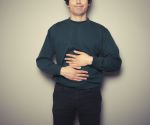Advertisement
By the time food has traveled through your digestive tract to the end of your large intestine, or colon, it is made up of waste material, which continues to lose water and solidify as it slowly moves along. The final product is known as stool, or feces.
At the bottom of your digestive tract are two areas crucial to fecal continence: the rectum and the anal canal (the last inch of the rectum ending at the opening to the outside of the body). Muscles in the colon propel feces into the rectum, which has walls that stretch to hold the stool. The last inch of the rectum is called the anal canal. Two kinds of muscle surround it. The internal anal sphincter, which is not under your conscious control, stays contracted most of the time to prevent leakage. The external anal sphincter surrounds the internal anal sphincter.
How does your body know when to release stool? You have stretch-detecting nerve endings in the rectum. When your nerves detect that the rectum is full, the internal sphincter opens briefly and lets a tiny bit of the rectum's contents come in contact with the external sphincter, which is rich with nerve endings. In a rapid "sampling reflex," these nerves inform the brain about whether the rectal contents are intestinal gas or liquid or solid stool. This allows you to act accordingly. You might allow gas to escape, or look for a bathroom right away if you have diarrhea. Otherwise, you might decide whether it is convenient to have a bowel movement, or whether you want to wait for a more convenient time or place.
To delay, you tighten the external anal sphincter (usually without thinking about it) to hold feces inside. As you are attempting to hold in stool, you also contract the puborectalis muscle, a pelvic floor muscle that loops around the rectum. When this muscle is contracted, it pulls the rectum so that it lies at a 90-degree angle to the anal canal rather than more directly above it. This counters the pull of gravity. Contracting these muscles often curbs the urge to defecate. The urge returns when more feces enter the rectum.
Once you are in the bathroom, you relax the puborectalis muscle and both the internal and external sphincters. Then, to propel the stool downward, you increase pressure in the abdominal cavity through the Valsalva or "bearing down" maneuver -- closing off the airway, tightening the abdominal muscles, and pushing the diaphragm down.
At the bottom of your digestive tract are two areas crucial to fecal continence: the rectum and the anal canal (the last inch of the rectum ending at the opening to the outside of the body). Muscles in the colon propel feces into the rectum, which has walls that stretch to hold the stool. The last inch of the rectum is called the anal canal. Two kinds of muscle surround it. The internal anal sphincter, which is not under your conscious control, stays contracted most of the time to prevent leakage. The external anal sphincter surrounds the internal anal sphincter.
How does your body know when to release stool? You have stretch-detecting nerve endings in the rectum. When your nerves detect that the rectum is full, the internal sphincter opens briefly and lets a tiny bit of the rectum's contents come in contact with the external sphincter, which is rich with nerve endings. In a rapid "sampling reflex," these nerves inform the brain about whether the rectal contents are intestinal gas or liquid or solid stool. This allows you to act accordingly. You might allow gas to escape, or look for a bathroom right away if you have diarrhea. Otherwise, you might decide whether it is convenient to have a bowel movement, or whether you want to wait for a more convenient time or place.
To delay, you tighten the external anal sphincter (usually without thinking about it) to hold feces inside. As you are attempting to hold in stool, you also contract the puborectalis muscle, a pelvic floor muscle that loops around the rectum. When this muscle is contracted, it pulls the rectum so that it lies at a 90-degree angle to the anal canal rather than more directly above it. This counters the pull of gravity. Contracting these muscles often curbs the urge to defecate. The urge returns when more feces enter the rectum.
Once you are in the bathroom, you relax the puborectalis muscle and both the internal and external sphincters. Then, to propel the stool downward, you increase pressure in the abdominal cavity through the Valsalva or "bearing down" maneuver -- closing off the airway, tightening the abdominal muscles, and pushing the diaphragm down.
Continue Learning about Digestive Health
Important: This content reflects information from various individuals and organizations and may offer alternative or opposing points of view. It should not be used for medical advice, diagnosis or treatment. As always, you should consult with your healthcare provider about your specific health needs.






